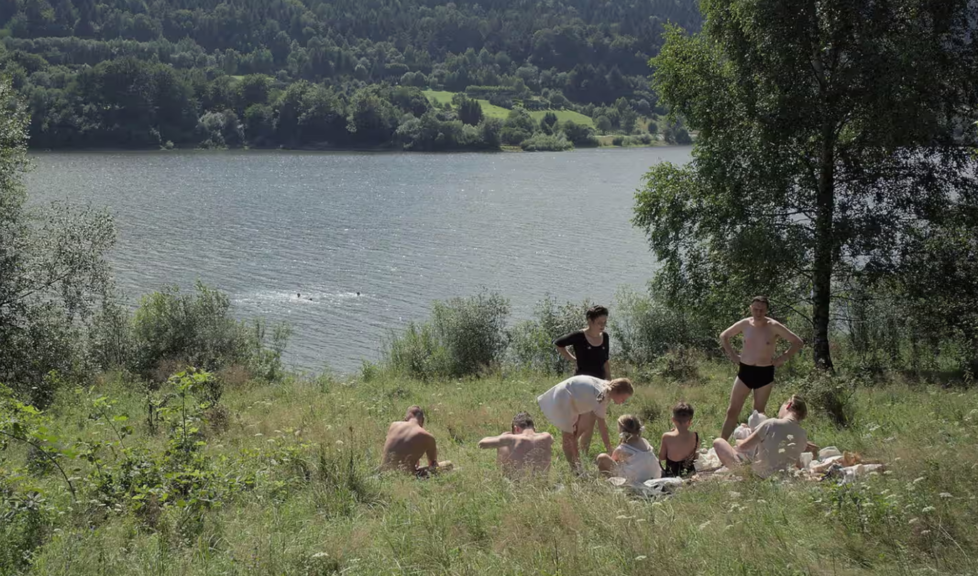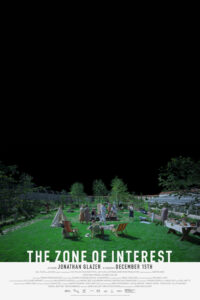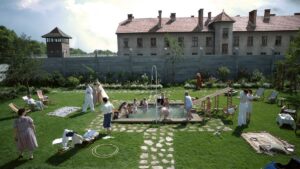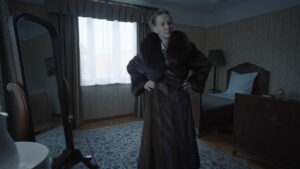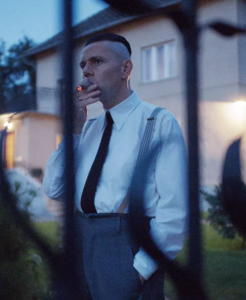A capsule version of this review appeared on FITI during my coverage of the Toronto International Film Festival in September 2023.
Written and Directed by Jonathan Glazer, adapting a novel by Martin Amis | 105 min | ▲▲▲▲▲
Hedwig and Rudolf Höss (Sandra Hüller and Christian Friedel) are a German couple with a passel of kids, living the dream. Rudolf is ambitious, a man who loves his work, while Hedwig keeps the kids in line, socializes with friends and spends time in their gorgeous garden, growing vegetables like pumpkin and kale while planning climbing vines up the garden wall.
If this sounds like just another domestic drama, it’s not. Rudolf is the commandant of the Auschwitz concentration camp in Poland during the Second World War. Their comfortable home lies just beyond the camp’s walls, the ones Hedwig is planning to cover in green, growing things.
Jonathan Glazer’s new film is both powerful and numbing, edging over into the experimental, where the visuals tell an entirely different story than Johnnie Burn’s extraordinary sound design.
With the opening titles fading to black over Mica Levi’s score, the sounds of birds slowly predominate. With this technique Glazer is already telling us to listen closely as he periodically fades his screen to white and to red, letting the sounds of people screaming, gunfire, barking dogs, and Nazi soldiers creep in. His cameras in the Höss home are at a distance, an unfeeling eye witness to their lives. He uses a thermal camera to shoot two segments at night, with a girl dropping apples in places where the starving prisoners will certainly work, a tiny bit of kindness but only visible with every ocular value reversed.
The funny thing is that the audience might not even notice the strange and disturbing sounds after awhile, lulled by their ubiquity until they fade into the background, just as they’ve done for this family. That’s true even of the low bellow of the ovens, the smoke curling into the sky at a distance, while we watch the Höss clan proceeding blithely to enjoy their privileges, birthdays, and a swimming pool.
Glazer told The Guardian that his film is, “about us and our similarity to the perpetrators, not our similarity to the victims.”
This feels like the last word in Holocaust fiction because it wouldn’t work if we didn’t know the history or hadn’t seen those many other movies, from Shindler’s List to Son Of Saul. That cultural burn-in is so vivid Glazer can offer this hideously banal, entirely clinical perspective and we fill in the blanks.
The picture takes a turn in the final 10 minutes, flashing forward to the present day, and while I wondered about that choice when I first saw it at TIFF, it makes more sense to me now: Nothing could be more effective in visual storytelling than a mountain of shoes.
Jonathan Glazer’s been gone too long — 10 years since Under The Skin, with Birth and Sexy Beast also in his filmography, he’s one of the best filmmakers working, he just chooses not to do so very often. He’s like one of his heroes, Stanley Kubrick, and this is Glazer’s The Shining for the way it inhabits the chilliest corner of horror.
It’s an unforgettable film delivering an undeniable truth about human cruelty, lack of empathy, and ability to compartmentalize.





